
Schwinn Axum DP 29 Mountain Bike
- MSRP: $499
- Buy from Walmart.com
Talk about trickle down mountain bike technology. Twenty-niner wheels, one-by drivetrains, and dropper posts were once just for in-the-know riders. Now, the entry-level and budget-friendly Schwinn Axum delivers all of this, plus a surprise or two beyond the official spec sheet.
Getting ready to ride
My test bike arrived in a shipping box almost fully assembled. I only needed to attach the front wheel and handlebars, and screw on a set of pedals.
Right away I noticed the dropper post remote wasn’t working. It turns out the cable and housing weren’t long enough. So, I installed a fresh cable and longer housing and also flipped the direction of the cable so it could be clamped at the lever instead of using the included barrel nut at the post. It’s a pleasant surprise to find the bike not only ships with a one-by-style dropper remote, but that the cable can be pinched at the lever for easier installation.
Be sure to read our in for test article about the Schwinn Axum for full specs and additional photos.

Surprise number two: The stock wheels and tires can be set up tubeless. Schwinn doesn’t advertise this, and the bike ships with tubes installed. The stock tires are 2.6-inch-wide, unbranded, and feature a wire bead while the rims are surprisingly well taped with a thick-looking band covering the spoke holes. It just took a few shots with an air compressor, a tubeless valve, and a bit of sealant to make the switch. I didn’t get the tell-tale popping sound when the tire finally seated, yet it seems to be holding air well enough for riding.
One minor bummer is that the informational stickers on the frame don’t peel off cleanly. To get the paper and gummy glue off completely takes some effort. There’s also a nut or something inside my test frame that rattles and rolls like a penny in a jar whenever the bike is moved. Everything on the bike appears to be secure, so perhaps it’s just an extra part or some welding slag that ended up inside the frame.

Bike fit
The latest Axum models are offered in two sizes this year, up from just one previously. I tested the larger size, and unfortunately it’s still too small for me. I’m 6’3″ and to be fair, Schwinn says this size is meant for riders up to 6’2″ tall. That’s actually the same upper height limit for the previous, one-size-fits-all model so it would seem the new sizing option is meant to expand the fit to smaller riders and not necessarily tall folks.

Even with the seat post pulled to its minimum insertion point, the saddle is too low for my tastes, so I would suggest taking the 6’2″ maximum rider height as a hard limit. The seat height issue could be solved with a longer post, and I would look for a dropper with more than the included 125mm of travel. The 720mm-wide handlebars also make for a tight fit for taller riders.
On the trail
As an entry-level hardtail, the Schwinn Axum is best suited for easy to moderate trails. The bike weighs a hair over 36 pounds which is on the heavy side, but I found it doesn’t suffer for climbing, and getting it in the air doesn’t take too much effort either. In fact, despite the short knobs on the tires and limited gearing, the Axum climbs steep, technical trails well. The 67.8° head angle is reasonable for a hardtail and the seat tube angle keeps the front end planted, while the rigid, aluminum rear end transfers pedal power efficiently. In terms of climbing traction, I think the weight of the bike is actually a plus, as are the 2.6-inch-wide tires.
Drivetrains on bikes at this price point tend to be a disappointment, requiring constant tweaking to keep them running smoothly. I tested an earlier version of the Axum last year and was never able to get the bike to shift correctly due to a maxed-out B-screw caused by a weak derailleur part. This bike uses the same AXS drivetrain, though fortunately this time I haven’t had any problems. I found the bike pedals and shifts well enough for 20-mile+ rides.

Going downhill is where the Axum’s limitations come into play. The first thing I noticed is just how loud the bike is over rough trails. To be clear, I’m not the type of rider who stops to track down every squeak and click; a little bit of noise is fine. However, this thing sounds like a one-man-band marching down the trail. The brakes squeak, the chain slaps, the fork clunks, and the kickstand wobbles. And don’t forget about that damn piece of metal that’s rolling around inside the frame somewhere. All that noise makes me hesitant to really push the bike on the descents, fearful that the whole thing just might fall apart.
Of course I have pushed the bike through some rocky, rooty trails at speed, and no, it hasn’t fallen apart. Still, that fear sticks in the back of my mind. Newer riders, and those who stick to the bike’s intended purpose may not run into this, but faster, more experienced riders will definitely find that the bike is scary loud.

While the drivetrain and the wheels perform well, the brakes and suspension will leave most mountain bikers wanting more. Mechanical disc brakes are lower maintenance than their hydraulic cousins but offer far less power. Heavier riders in particular should be wary of the stock brakes which require extra stopping distance.
Perhaps the biggest disappointment is the fork. I get it; a decent mountain bike fork costs more than this entire bike. On the plus side, the fork takes some of the sting out of riding bumpy trails, but beyond that, it really doesn’t give the rider much control, especially at speed. Preload is non-existent, the rebound is slow, and beyond the lockout, it’s not adjustable in any way. The one good thing I can say is the fork doesn’t have a harsh bottom out and has a linear feel thanks to its coil spring. With plenty of stiction, I didn’t find a need to use the lockout for climbing or pedaling. The frame does have a tapered head tube, so if buyers happen to find a smoking-good deal on a fork upgrade it should fit.
Should I buy one?
Everyone has a unique set of buying criteria and budget constraints, so this is a hard question to answer. I haven’t tested any bikes that cost less than this one (unless you count the non-dropper version of the Axum) but a quick look at 29er mountain bikes priced around $500 makes the Axum look pretty good. Few others come with a one-by drivetrain and none have dropper posts. For half the price, the Schwinn Boundary looks promising, though buyers get 20mm less suspension travel, one less gear, and no dropper post.
It’s tempting to speculate about upgrades “down the road,” and I usually try to steer clear of making them since the cost of a few decent parts often exceeds the cost of the bike. However, in this case, I will recommend investing in a pair of tubeless valves and a few ounces of sealant to try going tubeless. The only caveat is the labor involved might not be worth the time or expense in the end, especially if the rims need to be re-taped or there is an issue with one of the tires. Upgrading to hydraulic brakes, or getting a longer dropper post could be done for a couple hundred bucks each. Larger rotors might add a bit more stopping power for less money. Oh, and better tires could be worthwhile if the stock rubber isn’t cutting it.

For a $500 budget, the Schwinn Axum is tough to beat. I wouldn’t recommend it for someone willing to spend up to $1,000 though, since spending more or finding a mountain bike on sale will get buyers better suspension and brakes for a more enjoyable trail experience overall.
At the time of publication, the size large Schwinn Axum bikes are available for purchase at Walmart.com.




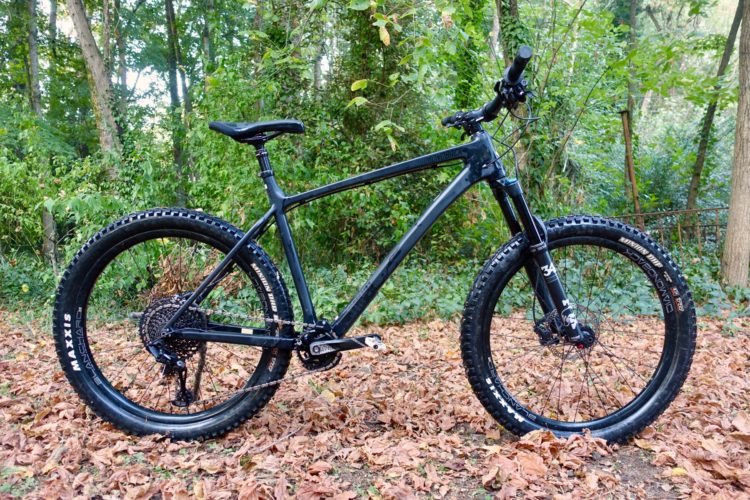

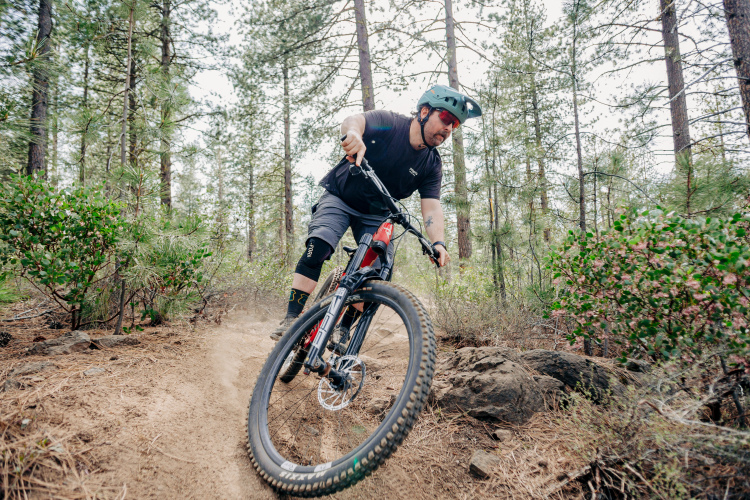
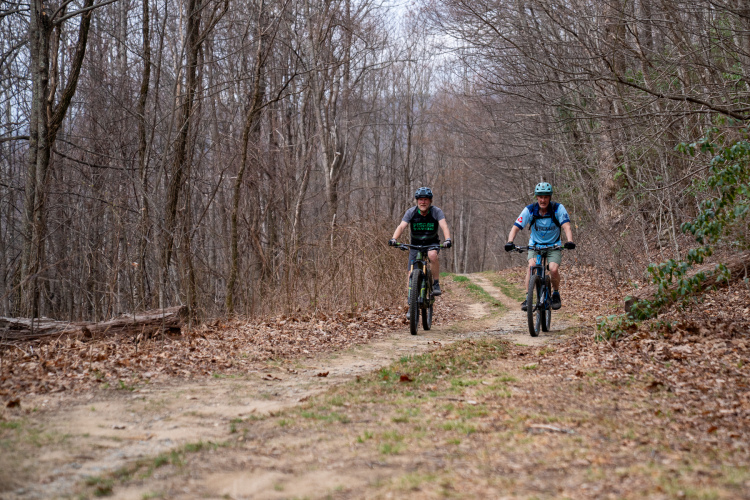
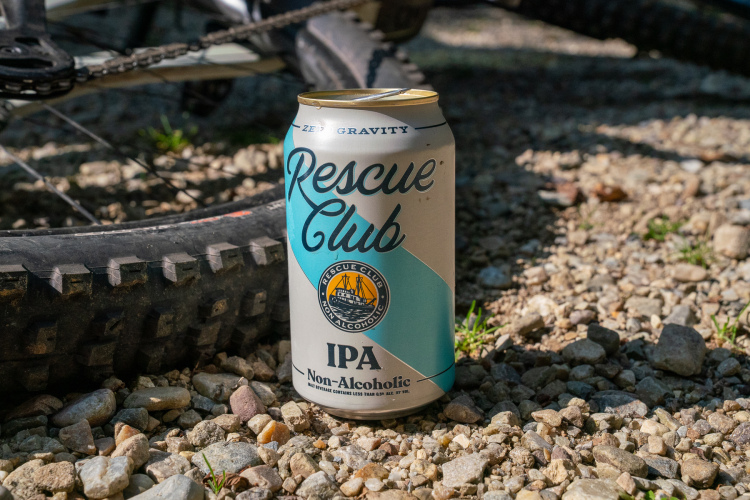
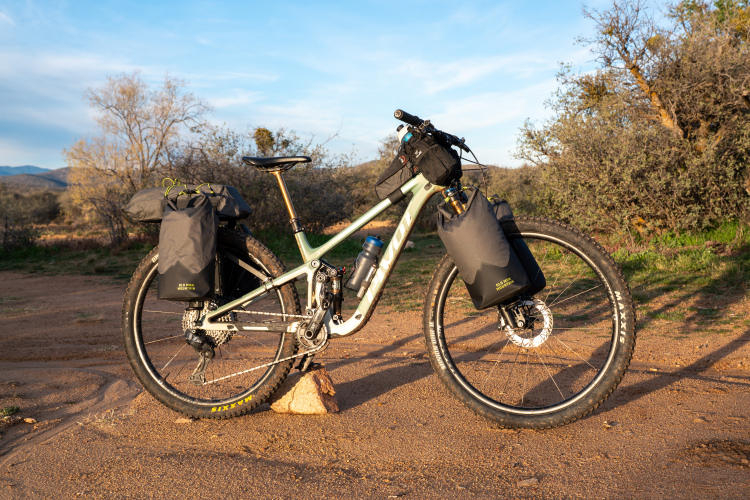

12 Comments
Jul 2, 2021
Jul 2, 2021
Keeping the kickstand is simply personal preference. Judging by all the comments about it, I'm in the minority but I find it's a fun accessory. I did remove the reflectors and also the "pie plate" on the cassette, again, based on my own preferences for how I like my bikes to look / perform.
Jul 2, 2021
Sep 29, 2022
Amusingly, a similar mystery rolling object inside.
It sounded like maybe inside the stem or head tube?
I plan to go with shorter bars and a longer stem, will investigate then.
Chain slap like mad.
Feels clumsy and slow. (Strava said otherwise, a top-10 time on a familiar trail, without pushing for it)
Tire grip lacking.
Mechanical discs HORRIBLE.
Forks suck, even worse when locked-out, with a nasty clunk. (I usually ride full rigid)
Left the kickstand on, made a ton of noise, but never deployed.
Small diameter grips not comfortable almost immediately.
KMC gold chain!?! (a premium chain on a Walmart bike is laughable, but welcome)
Shifts surprisingly quick and crisp.
Seat wasn't as bad as I've seen reviewed. (seatpost clamp was mushy garbage, though)
We'll see what breaks first, but initial impression is that I wouldn't discourage a new rider from buying one before investing serious coin in today's obscene pricing market. (even used bikes have gone stupid overpriced)
Oct 6, 2022
Feb 20, 2022
Jul 2, 2021
Jul 2, 2021
Jul 2, 2021
Jul 3, 2021
Jul 3, 2021
When I write that modern tubeless tires and systems feel/ride better I need to qualify that by including "according to the people I've met who used to ride with tubes." I rode with tubes for a long while, and these new tires that are being designed as part of a larger tubeless system will certainly grip and support cornering energy far better than those old models did. That feels significantly better to me, and it's worth the price. Even the first tubeless models felt better in terms of grip and suppleness, and those took a frustrating amount of work to set up. It's also worth the hassle, as I find tubeless tire mounting and setup with the current selection of tires and rims to be a quick and simple task. It might be even faster than mounting with a tube since you don't have to worry about pinching the tube between the tire bead and the rim.
Apart from some commuter and road stuff, new tires and rims are all being engineered around optimal tubeless integration today. I have interviewed multiple tire and rim manufacturers, and they're all stoked about the benefits they find with tubeless setups. So, while you can use a tube in modern tires, their design intent is tubeless-first. As you mentioned, the choice to tube that tubeless-first tire or not is all yours. Now that Jeff has tested these wheels and tires, folks who buy this bike know that it's an option.
You mentioned scientific testing in your reply, and for this sort of thinking, I look directly at the World Cup XC/DH and EWS race tracks. I have been following/engaging in MTB racing for most of my life, and the reduction of punctures at the top level of the sport today is impressive. Nearly a third of the field used to come down the WCDH track with at least a rear flat, and now there will often be zero flats — on a more technical and rocky trail at higher speed. The same can be said for XC and EWS, where the vast majority of riders have forgotten about flat tires. While there are other factors that contribute to fewer flats (better suspension, improved rim shape, stronger casing construction), I'll take that as evidence that tubeless systems are effective for preventing and repairing punctures. If it's working for the folks who are pushing tires and wheels far closer to their limit than I ever could, there's likely some evidence there. Athletes who are making part of their living from results aren't going to use tubeless if it's not the fastest and safest way to get down the trail with max grip and no flats.
Another quick example of tubeless puncture testing: I went to a three-day press camp to test out a new ebike in 2019, and the mechanics hadn't yet set the bikes up after they arrive from the factory, so they all had tubes in the rear tires. On the first day, our crew of journalists flatted over twenty tubes, despite running pressures of more than 35 PSI that noticeably compromised grip. For the following two days, all of the bikes were converted to tubeless and we had one puncture in the group.
I'm curious, do you run tubes in your MTB tires? If so, do you ever put any sort of sealant in them? Say, if you ride in Moab or any place where tubes are frequently punctured by goatheads and other thorns/burs. That has always seemed like a place tubeless systems (namely their sealant) reign supreme, regardless of rider preferences.
Cheers!
-Gerow
Jul 1, 2021